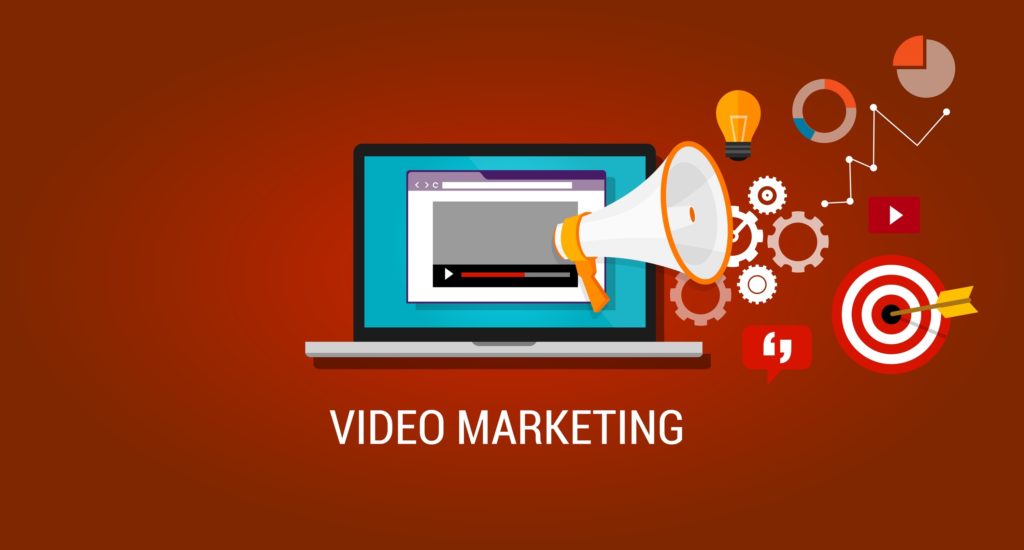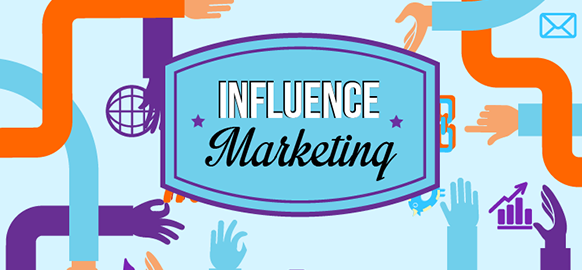Why Your Business Should Rethink How You Build a Website
Apr 30, 2025

Apr 30, 2025

Apr 30, 2025

Apr 29, 2025

Apr 28, 2025

Apr 27, 2025

Apr 26, 2025

Apr 25, 2025

Apr 23, 2025
Sorry, but nothing matched your search "". Please try again with some different keywords.


Are you thinking of expanding the reach of your goods and services to a wider audience or increasing your customer base? Then digital marketing is an effective way of achieving this goal. In the last decade, the use of the internet has grown exponentially, increasing the reach of digital marketing campaigns.
To effectively market on the internet, a digital marketing plan is vital as it ensures that your content reaches your target audience. Internet trends and tastes change rapidly, and this makes it essential for the adoption of a new digital marketing plan in 2023.
Recommended reading: How to Create a Social Media Marketing Plan
High-quality content is content that offers free and useful information that attracts and engages audiences and allows you to build your brand image. A number of online marketing campaigns fail as their content is aimed at ranking higher in internet search engines.
High-quality content makes content marketing easier as the audience will tend to share this content with friends and family as it is relevant and helpful to them. High-quality content reduces your website’s bounce rate and prevents problems such as deceptive content and deceptive practices like click-bating.
To effectively incorporate high-quality content into your Digital Marketing Plan, it is essential to present unique, accurate, and relevant content, and to link this content to other pages to reach a wider audience.
A growth-driven digital marketing plan is a process of website design that focuses on the growth of a website in incremental steps rather than redesigning the whole website after a two-year period which is a hallmark of traditional web design. The website is launched and starts out small, and growth is determined by small steps based on data and analysis that improve the overall performance of the website.
The growth-driven website plan is based on the traditional scientific method that follows research-hypothesis-experiment-analysis, but in this, case, it follows plan-develop-learn-transfer. The importance of a growth-driven website plan is that it minimizes the risk of wasting time and resources associated with website design, as the incremental steps allow for greater control and analysis of ineffective features that result in a more productive website.

The use of social media has increased drastically in the last decade, with Instagram exceeding one billion users. Social media marketing offers an interactive platform that an organization can use to advertise, communicate, and receive feedback from its audience.
The relatively low cost of social media marketing is a big advantage to marketers who can release a significant amount of content without having to pay advertising fees. Social media gives marketers access to a large audience across the globe to incorporate into their digital marketing plan.
To ensure the effectiveness of a social media marketing additional focus on content is required, as it has to be engaging and relevant to the target audience.

Live chats are an interactive feature on websites that allow customer support to chat with clients. This feature allows clients to receive helpful information and solve problems with the aid of customer support. In recent years the overall increase in the number of internet users has made it impossible for websites to have enough staff members to handle all incoming live chats. Chatbots have become an alternative to live chats, where a computer program interacts with clients either through voice messages or text messages.
As a result, a large number of client’s customer service needs can be met at a lower cost as compared to using live chats. A major problem with using live chat and chatbots is that they tend to malfunction. Chatbot program software may fail, and network problems may affect the availability of live chats. Testing these live chat and chatbots is vital as they play an important role in a website and its digital marketing plan.

Increasing your video marketing budget is an essential part of ensuring the success of your 2023 Digital Marketing Plan. Video Marketing is a useful tool as videos are very informative and can convey a lot of information to the audience in a relatively short amount of time. The entertainment aspect of videos means that they can receive a cult-like following from the audience if they are creative or funny enough.
As a result, the video will be shared across multiple social media sites reaching a wider audience, and this will reduce the amount of money a company will have to pay to advertise on websites to reach a similar size audience. To ensure that your digital marketing plan is effective additional budgetary funds are needed to increase video quality and to hire creative directors to ensure that the videos appeal to the target audience.
Leverage data-driven marketing is the use of data that is collected by an organization or market data to gain insights into market trends. In addition, data on consumer demands and tastes are also collected. The insight gained from data collection allows for the formulation of effective marketing plans and strategies.
Data-driven marketing is an effective part of your digital marketing plan as it relies on actual data which enables organizations to make better decisions and predict future changes in market trends and consumer demands.

Influencer marketing has become a part of every digital marketing plan in 2023. It does not focus on the audience but rather on prominent individuals who can influence the audience. In the last five decades, advertisements have become less effective due to the increasingly large amounts of advertisement campaigns and a growing distrust of adverts by the general public. A target audience is more likely to be influenced by a prominent public figure that they admire than an advert. Influencer marketing combines the appeal of an influential individual to advertising to attract potential customers while giving advertisers access to the influencer’s loyal fans. Influencers such as celebrities can expose a brand to a large domestic and foreign audience and can be an essential way for a market campaign to target a specific audience.
Evidently, in 2023 to increase your audience or customer base, you will have to implement a new digital marketing plan. To increase the effectiveness of your website, you will have to launch a growth-driven plan that incorporates high-quality content. To improve the overall performance of your digital plan, it is vital to expand social media marketing and video media marketing and to employ leverage-data marking. Frequently testing the chatbots and the live chat features on your site will ensure that the customer care needs of your customers are met.
Creating a successful digital marketing plan in 2023 requires a strategic approach that takes into account the evolving landscape of digital marketing. Here are the most essential things to consider:
Begin by defining clear and measurable objectives for your digital marketing plan. These could include increasing website traffic, generating leads, boosting sales, or enhancing brand awareness. Align your key performance indicators (KPIs) with these objectives to track progress effectively.
Understand your target audience’s demographics, interests, pain points, and behaviors. Create detailed buyer personas to guide your content and ad targeting. Segment your audience based on these personas for a more personalized digital marketing plan.
Develop a comprehensive content strategy that caters to your audience’s needs and preferences. Create valuable and relevant content that addresses their pain points and provides solutions. Consider various content formats, including blog posts, videos, infographics, and podcasts.
Utilize a mix of digital marketing channels to reach your audience where they are most active. This may include social media marketing, email marketing, content marketing, search engine optimization (SEO), paid advertising, and influencer marketing.
Given the increasing use of mobile devices, ensure that your website and content are mobile-friendly. Optimize for mobile search and provide a seamless user experience across all devices.
As voice search and artificial intelligence (AI) continue to grow, consider how your content and SEO strategy can adapt to these trends. Create content that answers voice search queries and explore AI-powered chatbots for customer support.
Video content is a dominant force in digital marketing. Incorporate video into your strategy, whether through YouTube, live streaming, or short-form videos on platforms like TikTok or Instagram Reels.
Stay updated on data privacy regulations, such as GDPR and CCPA, and ensure your digital marketing plan are compliant. Collect and handle user data responsibly, and be transparent about data usage.
Use data and automation to personalize your marketing messages. Tailor content, product recommendations, and email campaigns based on individual user preferences and behaviors.
Implement robust analytics tools to track the performance of your digital marketing plan. Regularly analyze data to make informed decisions, optimize campaigns, and allocate resources effectively.
Prioritize user experience on your website and other digital platforms. A user-friendly interface, fast loading times, and intuitive navigation can significantly impact your success.
Keep an eye on Google’s search engine results page (SERP) features and adapt your SEO strategy accordingly. Featured snippets, knowledge panels, and other SERP elements can impact organic traffic.
Consider your brand’s social responsibility and ethical practices. Consumers are increasingly supporting brands that align with their values, so ensure your digital marketing plan reflects your commitment to social and environmental causes.
Be prepared to adapt and iterate quickly. The digital landscape evolves rapidly, and flexibility is key to staying competitive. Regularly assess your digital marketing plan and be open to making changes based on data and market trends.
Monitor your competitors’ digital marketing plan to identify opportunities and gaps in your strategy. Analyze their tactics, messaging, and engagement levels to refine your own approach.
Allocate your budget wisely across various channels in your digital marketing plan based on your goals and performance data. Regularly review and adjust your budget to optimize ROI.
Invest in robust cybersecurity measures to protect your digital assets, customer data, and online reputation from cyber threats.
Invest in continuous training and development for your digital marketing team. Stay current with industry trends and encourage your team to acquire new skills and certifications.
By considering these essential factors, you can create a digital marketing plan that is both effective and adaptable to the changing landscape of digital marketing in 2023. Remember that a successful digital marketing strategy is not static but requires ongoing evaluation and adjustment to stay competitive and achieve your business goals.
Read also:
Mashum Mollah is an entrepreneur, founder and CEO at Viacon, a digital marketing agency that drive visibility, engagement, and proven results. He blogs at BloggerOutreach.io.
View all Posts
Why Your Business Should Rethink How You Buil...
Apr 30, 2025
Maximize Telegram’s Full Potential with Det...
Apr 30, 2025
Loveable AI: Is This AI-Powered App Building ...
Apr 29, 2025
Which Is The Best LinkedIn Alternative? 11 Be...
Apr 28, 2025
Rytr AI: Is This AI-Driven Content Creation T...
Apr 27, 2025

